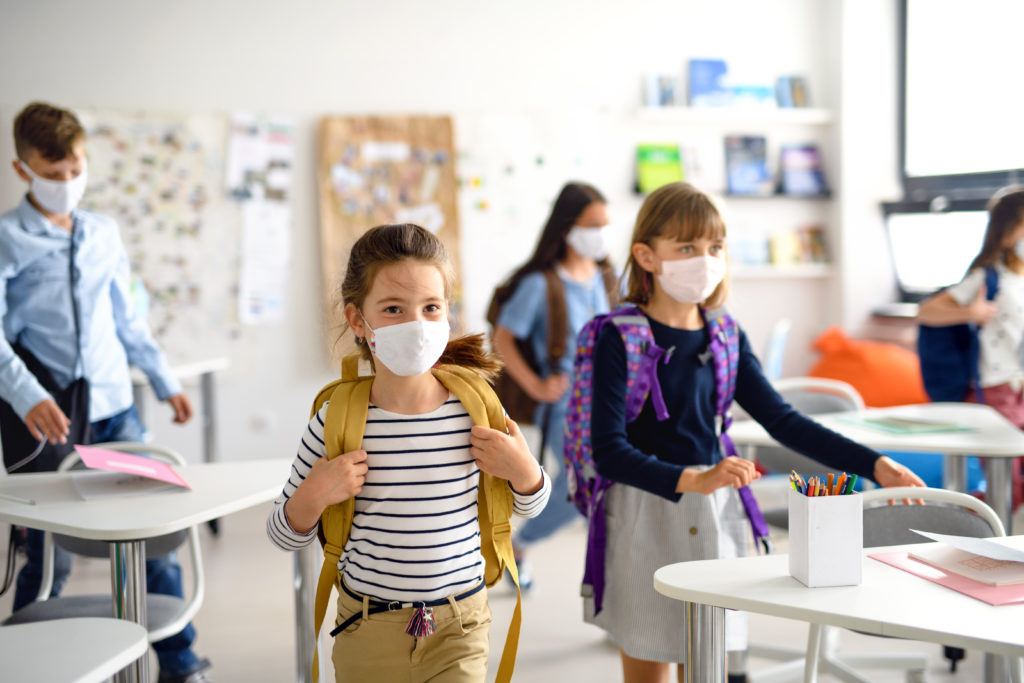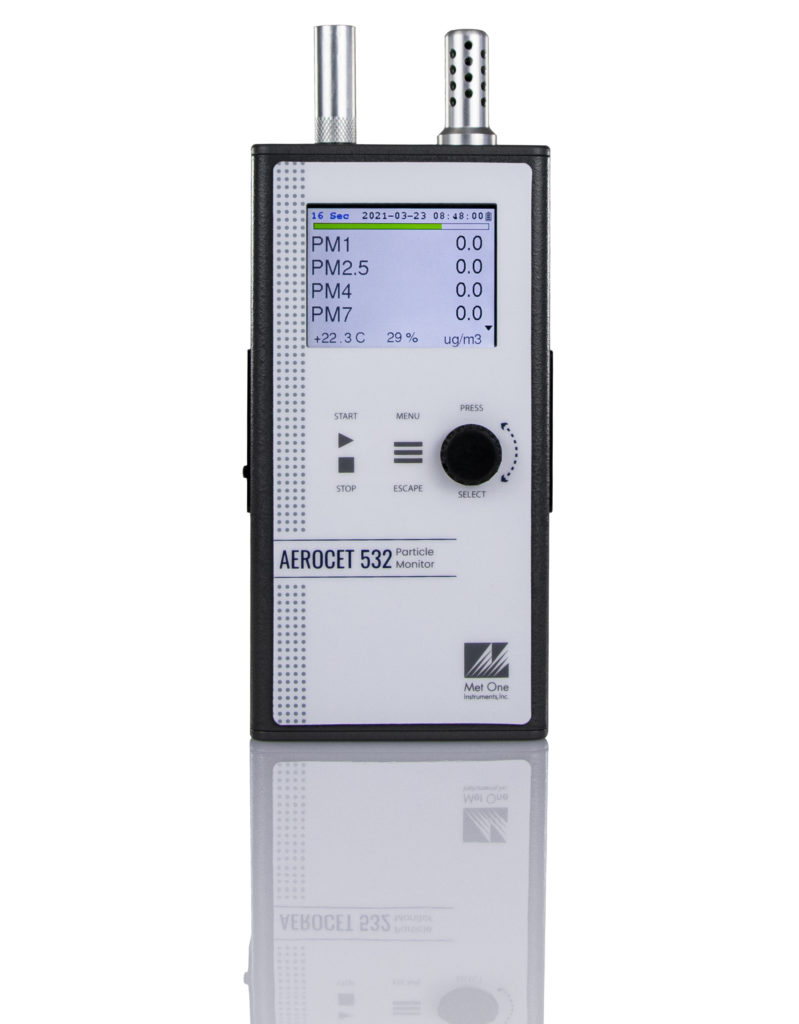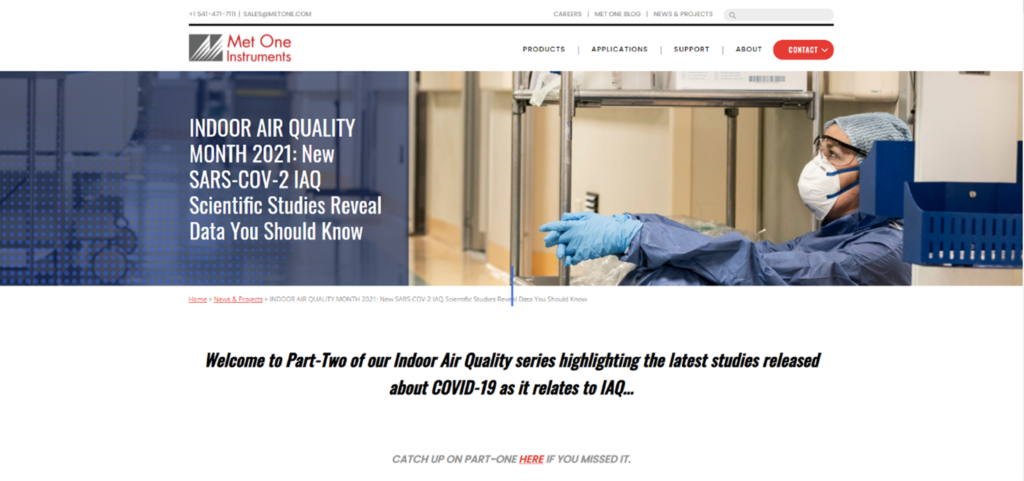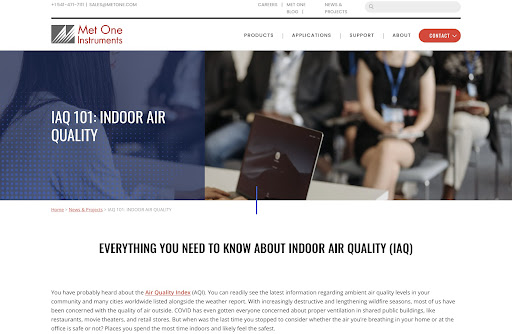Welcome to Part-One, of our Two-Part series highlighting the latest studies released about Indoor Air Quality…
Did you know that October is National Indoor Air Quality Awareness Month? The American Lung Association reports that people take an average of 21,600 breaths every day. We also spend 80% of our time indoors. The quality of the air we breathe is of critical importance.
💡 Which is precisely why Met One Instruments, Inc. was founded in Grants Pass, Oregon, in 1989 to help give communities the tools to monitor air quality, whether indoors or out, for all of us.
Most research about air quality is dedicated to outdoor monitoring. There is little insight about where most of us spend at least 80% of our time –– indoors. Our team is excited to present, as a series, our findings from reviewing the latest studies on indoor air quality. In these studies, scientists offer valuable insight from their research on various aspects of how health is affected by indoor air pollution.
🔍 Today, we are going to examine four case studies recently released:
- “Associations between acute exposures to PM2.5 & carbon dioxide indoors & cognitive function in office workers: a multi-country longitudinal prospective observational study”
- “Unintended Consequences of Air Cleaning Chemistry”
- “Integrating Personal Air Sensor and GPS to Determine Microenvironment-Specific Exposures to Volatile Organic Compounds”
- “Early age exposure to moisture and mould is related to FeNO at the age of 6 years”
📖 Let’s get started…
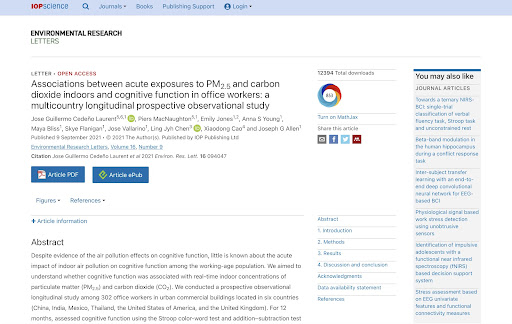
A new study published on September 9, 2021, “Associations between acute exposures to PM2.5 & carbon dioxide indoors & cognitive function in office workers: a multi-country longitudinal prospective observational study,” follows 302 office workers in rural commercial buildings located in China, India, Mexico, Thailand, and the United States.
💡 Did you know that inside buildings, pollutants are often found in higher concentrations than outdoors due to the limited dilution capability of an enclosed space?
For 12 months, the researchers of this study assessed the participants’ cognitive function using a “Stroop color and word test” and an addition/subtraction test (ADD) using a mobile app. The researchers found that higher PM2.5 coupled with lower ventilation rates were associated with slower response times and reduced accuracy.
In other words –– participants of the study had fewer correct responses per minute for eight out of the ten metrics when exposed to higher levels of indoor air pollution. This study was conducted with adults in working environments. Think about how important the quality of air is to our children to learn in school.
🔍 Study Highlights
“A growing body of evidence is showing associations between air pollution and impaired cognitive function. Outdoors, evidence is starting to emerge that chronic exposure to fine particulate matter (PM2.5) may also impact cognitive performance through impacts to the central nervous system (CNS) (Block and Calderón-Garcidueñas 2009).”
“Ambient air pollution can penetrate indoors, where most exposures can occur due to the high percentage of time spent indoors. The extent to which ambient pollution penetrates and accumulates indoors is influenced by ventilation, infiltration, and filtration (Ben-David and Waring 2016). Consequently, building design and operations can affect indoor exposures to CO2 and PM2.5, impacting building occupants’ cognition.”
“Researchers have recently identified associations between exposure to PM2.5 and various effects on the CNS and neurodegeneration (Block and Calderón-Garcidueñas 2009). A hypothesized mechanistic pathway is that inhalation of PM2.5 may lead to a level of chronic, systemic inflammation that impacts the CNS.”
“More recently, a short-term association of PM2.5 and cognitive function among older men in the Normative Aging Study was reported (Gao et al. 2021). Effects of PM2.5 on neurocognitive performance have also been found in younger populations, including fetuses (Guxens et al. 2014), school-age children (Saenen et al. 2016), and adolescents (Kicinski et al. 2015).”
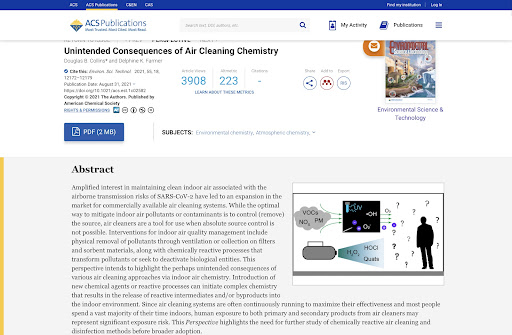
This study published August 31, 2021, “Unintended Consequences of Air Cleaning Chemistry,” sheds light on the fact that while unintended, there have been consequences to using various air cleaning approaches without understanding the complications that the introduction of new chemical agents can create. The researchers reveal they have found reactive processes and complex chemical reactions we do not fully understand.
💡 “The air cleaning industry is largely unregulated, with few standards to provide performance & safety benchmarks.” –– Unintended Consequences of Air Cleaning Chemistry
Since SARS-CoV-2 has appeared, there has been more interest than ever before in maintaining clean indoor air. But at what cost? Research in this study reveals that in recent years the introduction of new chemical agents has resulted in chemical reactions and by-products in indoor environments we have never before seen or regulated previously.
🔍 Study Highlights
“Since air cleaning systems are often continuously running to maximize their effectiveness and most people spend a vast majority of their time indoors, human exposure to both primary and secondary products from air cleaners may represent significant exposure risk. This Perspective highlights the need for further study of chemically reactive air cleaning and disinfection methods before broader adoption.”
“While studies on the byproducts of some air-cleaning technologies exist, (5−8) less attention has been paid to the broader chemical side effects of air cleaners on indoor chemistry. (3) The field of indoor air quality management is ripe for development of new materials and technologies, but a firm understanding of their fundamental chemistry and broader impact on air quality is needed.”
“The optimal way to maintain good air quality is to limit pollutant sources in the first place. This axiom is true for pollutants of nearly all kinds and applies to both indoor and outdoor environments. However, once contaminants are introduced to a building, ventilation and filtration of air are well-established, effective strategies for mitigation.”
“Overall, substantial concerns remain regarding exposure to oxidants generated, and byproducts formed, by air cleaning devices that are intended to remove trace gases through chemical transformation. Caution is warranted before more concrete, peer-reviewed studies of their safety are completed.”
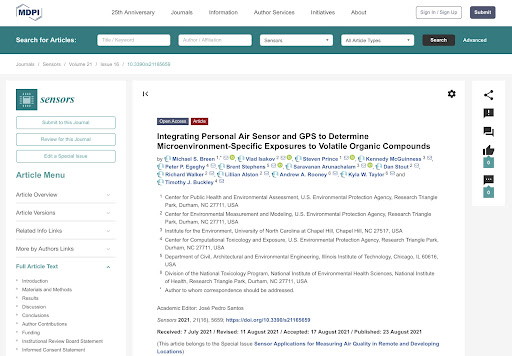
This study published August 23, 2021, “Integrating Personal Air Sensor and GPS to Determine Microenvironment-Specific Exposures to Volatile Organic Compounds,” examines our exposure to volatile organic compounds (VOC’s) in indoor environments, which they describe as an “understudied public health concern.”
The researchers integrated continuous data in 1-minute intervals from 5 participants for 45-days—the participants’ time-resolved sensor-based measurements of geocoded total (TVOIC) with a GPS logger. Exposure to air pollution was classified into four micro-environments (MEs):
- Indoors at Home (Home-In)
- Indoors at other Buildings (Other-In)
- Inside Vehicles (In-Vehicle)
- Outdoors (Out)
We were surprised to learn that the two participants living in single-family houses with attached garages exposure to air pollutants in their homes were substantially higher than the three participant homes without attached garages. Why is that?
🔍 Study Highlights
“The daily average Home-In exposures exceeded the estimated Leadership in Energy and Environmental Design (LEED) building guideline of 108 ppb for 60% of the participant-days. We identified 94 HEEs across all participant-days, and 67% of the corresponding peak levels exceeded 1000 ppb.”
“Volatile organic compounds (VOCs) are released to the indoor air from a broad range of building materials, volatile chemical products (e.g., cleaning agents, personal care products), and activities (e.g., cooking); and released to the outdoor air from mobile and stationary sources (e.g., vehicles, gas stations) [1,2,3].”
“Thus, VOC exposures can occur in various indoor microenvironments (MEs) (e.g., residences, work, stores, restaurants), outdoor locations (e.g., parking lots, gas stations), and inside vehicles. Studies show that there is a need to better understand how outdoor and indoor VOC sources contribute to personal exposures.”
“To address the limitations of stationary air pollution monitors, there is an increasing use of mobile electronic devices, such as wearable air pollutant sensors with continuous sampling that integrate with a smartphone app to collect geocoded time-resolved air pollutant exposures [6].”
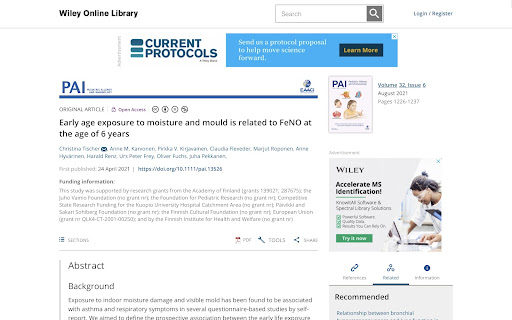
This study published April 2021, “Early age exposure to moisture and mould is related to FeNO at the age of 6 years,” addresses the fact that exposure to indoor moisture/mold is associated with asthma and respiratory symptoms in children. Did you know that the global occurrence of allergic diseases has risen for more than half of a century?
💡 A considerable proportion of children worldwide are exposed to a moldy, damp indoor home environment. Exposure to indoor moisture damage & visible mold is associated with asthma or respiratory symptoms in several studies.
The research in this study suggests that microbial cell fragments shed by fungal spores induce inflammatory processes within the respiratory tract. In turn, the exposure of children to damp or mold-infested indoor environments is the catalyst to developing chronic respiratory ailments such as asthma.
🔍 Study Highlights
“In the current study, inspector-observed early age exposure to major moisture damage or visible mold in the child’s main living areas including child’s bedroom, living room, and kitchen was significantly associated with increased FeNO levels at the age of 6 years.”
“Already now allergies and asthma are among the most common chronic diseases in many parts of the world with 30% to 40% of the population affected by at least one or more allergic conditions. Reduced lung function in early childhood is associated with asthma as well as persistent low lung function in young adulthood, but also with other pulmonary disorders such as chronic obstructive pulmonary disease (COPD) in later adulthood. Environmental exposures in early infancy are particularly important for the development of regulatory mechanisms preventing inflammatory responses.”
“A key strength of this study is the objective and extensive inspector-based report of moisture damage and mold within the homes by using standardized methods. Moreover, this is one of the few available prospective studies looking at early age exposure to moisture damage and mold in relation to FeNO and lung function as objective markers for airway inflammation and asthma.”
Met One Instruments, Inc. offers a lineup of handheld particle monitors that measure suspended particulate matter indoors, including PM2.5 and several other particle sizes, helping folks make informed decisions about the air quality in their space. Ranging from the affordable Model 804, to the universally helpful Aerocet 831, to the optimized Aerocet 532 offering a large color display and expanded memory, Met One Instruments, Inc. has the handheld air monitoring device suitable to your specific IAQ needs.
Thank you for joining us in Part-One of our IAQ Series, celebrating National Indoor Air Quality Month! Catch us for Part-Two, which will be focused on new scientific studies about COVID-19 as it relates to indoor environments. We will be examining the latest information regarding Indoor Air Quality safety and the novel SARS-CoV-2 virus.
Met One Instruments Inc. develops stationary and handheld air quality sensors that keep communities across the globe safe. Check out our “Indoor Air Quality 101” article. Catch you next week for Part-2 of this series!
🔗 Don’t miss Part 2 of this series, INDOOR AIR QUALITY MONTH 2021: New SARS-COV-2 IAQ Scientific Studies Reveal Data You Should Know
💡 Would you like to learn more?
🔗 Read Met One Instruments “EVERYTHING YOU NEED TO KNOW ABOUT INDOOR AIR QUALITY (IAQ)” Indoor Air Quality 101 Article
